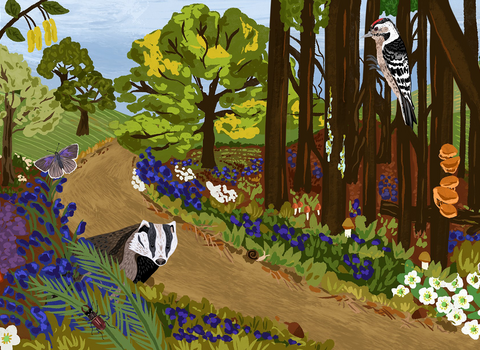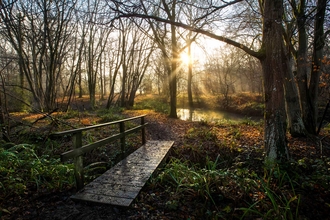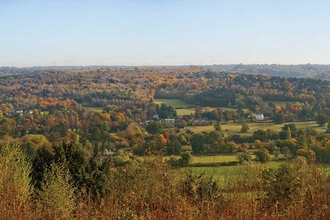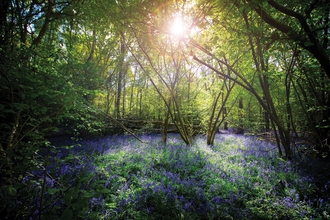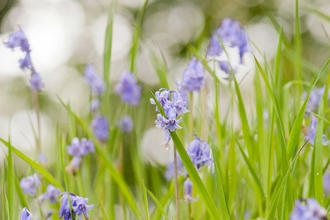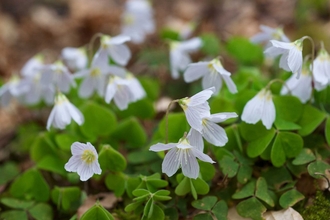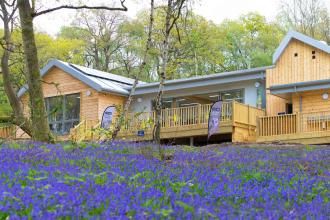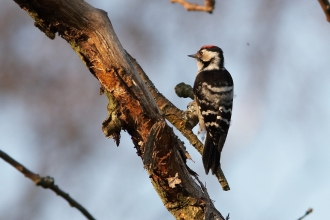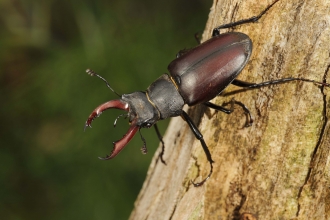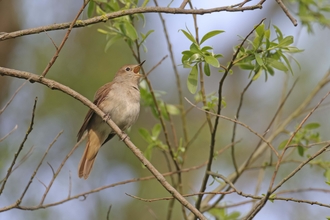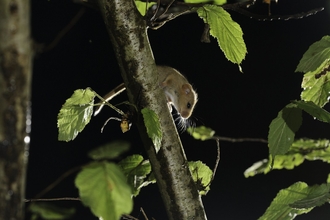Woodland
Surrey is England's most wooded county, with woodland covering around a fifth of the county – and a quarter of these woodlands are recorded as ancient woodland, which have existed since at least 1600 and host diverse and intricate ecosystems.
These magical habitats provide a home to thousands of species, while providing an essential service in storing carbon, offering us a place to relax and literally improving our atmosphere. Keeping them in good condition requires a sustained effort, year on year, and we need your help to do it.
What is woodland?
Lowland mixed Oak and Ash woods are the archetypal woodland of the Surrey Hills. Growing on deep, fertile soils, oak, ash, hornbeam or lime usually form the canopy, with a tall understorey of hazel and field maple. On acidic soils, carpets of Bluebells and Wood Anemone cover the woodland floor in spring. Wet woodland is characterised by Willow, Birch and Alder that thrive in poorly drained or seasonally flooded soils.
Why is it important?
The UK is home to more than half the world's population of Bluebells (Hyacinthoides non-scripta) and their presence is a sign you are in a very old woodland. Alongside Bluebells, plants including Wood Anemones, Lesser Celandine, Ramsoms, stitchwort, Yellow Archangel and the Early Purple Orchid make an impressive floristic display.
Surrey’s woodlands support a vast range of wildlife from Hazel Dormice to Stag Beetles, Tawny Owls, Nightingales, three species of woodpecker and over a dozen bat species.
The UK's woodlands are estimated to soak up around 21 million tonnes of carbon dioxide a year. They also help to limit flooding, with wet woodlands helping to slow the flow of water downstream. Woodland root systems also help prevent soil erosion, particularly in hilly areas where soil can be washed into streams and rivers.
Habitat management
As traditional woodland industries such as coppicing and charcoal making have declined, the abandonment or insensitive management of woodland has resulted in the loss of species-rich clearings, coppices and glades. This has hastened massive declines in many woodland species such as Hazel Dormice.
At Surrey Wildlife Trust, we have reinstated traditional woodland management techniques to ensure that the flora and fauna that evolved alongside historic human practices and the actions of large native species such as Wild Boar and European Bison over thousands of years can persist.
Whilst tree planting is undertaken where necessary, it is not a simple solution to the loss and decline of our existing woodlands, which have developed complex and diverse ecosystems over many hundreds or thousands of years. Protecting ancient woodland and allowing these habitats to thrive and nurture its inhabitants is crucial for our biodiversity. We need your help to maintain an intensive schedule of woodland management activities, and where appropriate, to purchase and connect woodland areas and ensure their survival into perpetuity.
Surrey's woodland sites
We manage many of Surrey's woodland sites for wildlife. See if you can spot a site near you and visit this fantastic habitat.
Important woodland species
Find out more about the diverse range of species found in Surrey's woodlands.

